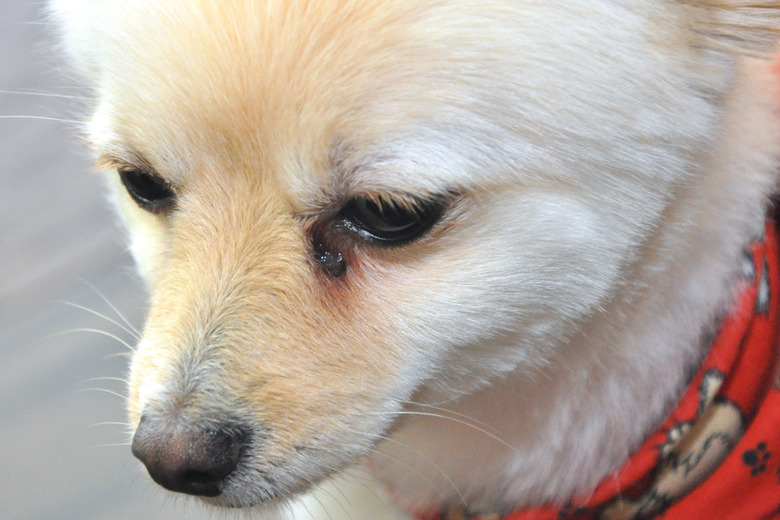How To Care For An Eye Bruise On A Dog
The best way to care for your dog's eye bruise depends on what caused it. Mild eye trauma usually gets better without too much intervention, but eye injuries should always be taken seriously. Dogs rarely get visible bruises except in cases of severe trauma, poisoning, or disease. If you notice bruising on your dog, take her to the vet so you can work together to figure out what caused it.
Assess your dog's black eye
Assess your dog's black eye
Keep your dog calm and examine her eye to determine the severity of the injury. An eye injury could progress and eventually require surgery, or removal of the eye completely. If you can't see a bruise right away, there are other signs that may tell you that your dog's eye is bruised beneath the surface:
- Squinting
- Pawing at the eye or face
- Inability to close or open the eye properly
- Redness
- Swelling
After the initial injury, monitor your dog's symptoms to see if they're getting better or worse. Mild swelling and tenderness are to be expected in the case of any eye injury. But if your dog can't stop pawing at her eye, the eye gets more swollen, or your dog's vision is limited, the injury may be serious. Take her to the vet right away to mitigate complications and prevent losing your dog's sight.
Determine the cause of the injury
Determine the cause of the injury
If your dog has visible bruising around her eye, you may need to do some investigating. Severe trauma, such as a car accident, a hard fall, or a nasty bite from another dog may cause bruising. Watch for other signs of trauma, such as licking, limping, or reduced activity level. Otherwise, the ingestion of a toxic substance, allergic reactions, and diseases are possible causes you need to consider.
Bruising may be a result of liver toxicity if your dog accidentally ingested something toxic, like an over-the-counter painkiller or pest poison. Other signs of toxicity include abnormal heart rate, nosebleeds, pale gums, drooling, agitation, inability to urinate, and seizures. If you rule out trauma and poisoning, your dog's black eye could be a sign of an allergic reaction, or it may be the result of a disease.
Two blood-clotting disorders that can cause bruising in dogs are hemophilia and Von Willebrand disease. Ticks can spread diseases that cause issues with blood platelets; diseases, such as cancer, can disrupt the metabolic process and lead to bruising; or in rare cases, the immune system can attack the blood platelets, which are responsible for clotting. All of these possible causes should be looked at when trying to determine the root cause of your dog's bruising.
Continue with at-home eye care
Continue with at-home eye care
When a dog has a black eye, she may try to paw at her eye and face. Don't let her. Pawing at it can make the bruising and the pain worse. Try an Elizabethan collar, also known as an E-collar, which is a cone-shaped collar that a dog may need to wear to prevent her from touching an injury while it's healing. It reduces the chances of your dog's black eye getting worse. Do your best to keep your dog calm. If she's scared and in pain, she may need some extra comfort.
Carefully follow all directions from your vet. You may need to give your dog eye drops, antibiotics, anti-inflammatories, and/or analgesics. Continue with all care instructions that your vet gives you because the eye might still be at risk of infection. If toxicity caused the black eye or your dog has just been diagnosed with a blood-clotting disorder, your vet will give you special instructions for how to treat it.
